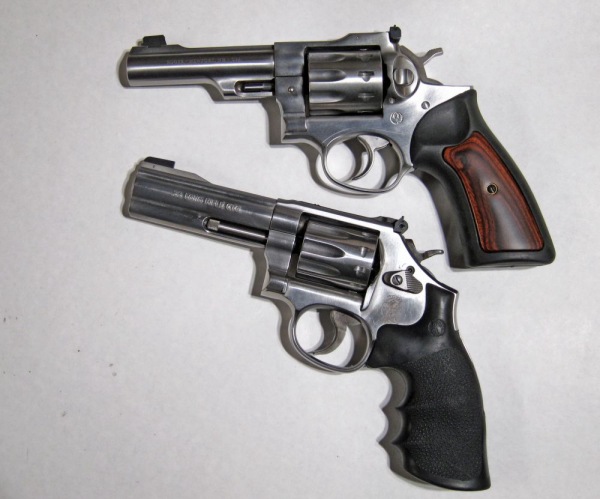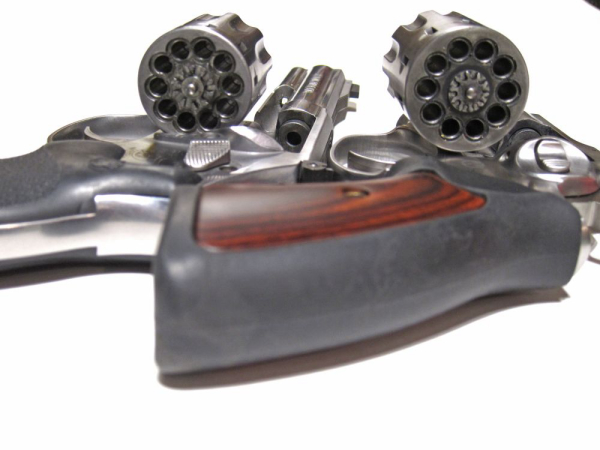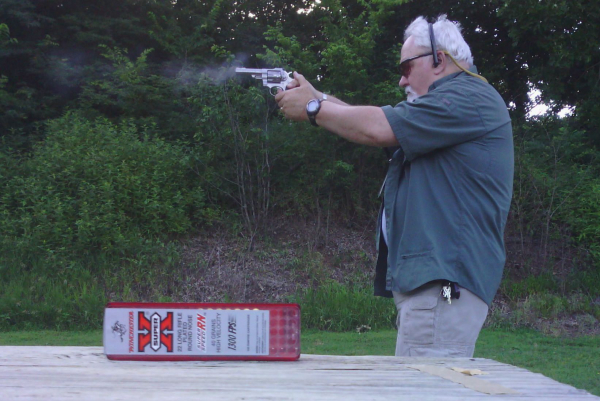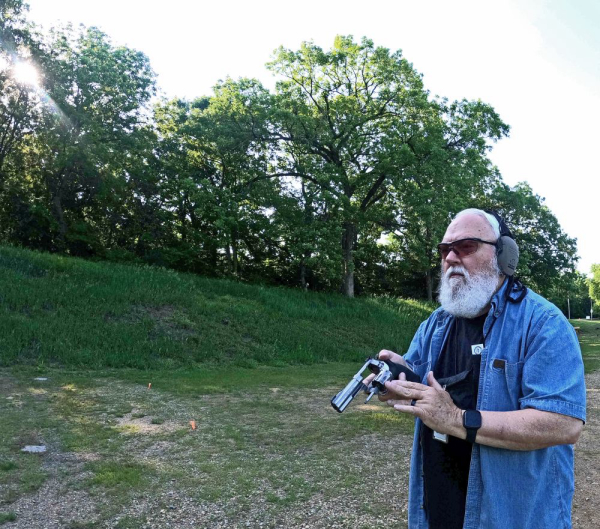These things are getting tougher to find. As the small, so-called “Kit Gun” versions of the rimfire revolver and the personal defense-style lightweight tiny 22s are being produced, manufacturers seem to be turning away from the larger, heavier trainer-type 22 revolvers.
Aside from the movement of Ruger toward the single-action 22, currently at a pinnacle with the Super Wrangler, the mid-size 22s are fading from the marketplace.
What started my hunt was the ostensibly still available S&W Model 617 – a four-inch version recently arrived and will be covered in greater detail later. Meanwhile, comparing it to the lamented, apparently no-longer-in-production Ruger GP100-22, seemed to be a worthwhile exercise.
First, what are such weighty rimfires good for? Education, or so it seems to me.
Comparing the M617 (current version of the old K-22 Masterpiece) to the Davidson’s exclusive GP100-22 four-inch, tells the tale.


| M617 | GP100-22 Davidson’s | |
| Barrel | 4” | 4.13” |
| Caliber | 22 LR | 22 LR |
| Capacity | 10 | 10 |
| Weight | 40.2 oz. | 40 oz. |
| Construction | Stainless Steel | Stainless Steel |
| Rear sight | Adjustable | Adjustable, white outline |
| Front sight | Patridge | Fiber Optic |
| Stocks | Rubber, Hogue | Rubber, Ruger with wood insert |
Sadly, even the standard 5.50” GP100 22 (42 oz.) is “Currently Unavailable” according to the Ruger website. We still have the S&W, but I’m sad to see the Ruger go.
If you want to learn double-action shooting, at some point you have to do some live fire. Looking at ammo costs, the most price effective way is finding a 22 LR DA revolver. Dry practice is good – use dummies or drywall anchors to cushion the fall of the firing pin. Dry snapping a 22 is bad business.
At one time, I used fired 22 hulls for dry practice – in the right environment. I’d move the hulls around to balance the firing pin strikes, but then have to drive the empties out and discard them. There’s only so much space and hitting a previously hit part of the hull is okay a few times. I wouldn’t push my luck.
But for live fire, 22s rule the range. They are relatively quiet, don’t beat up the guns or the shooters – or the backstop, for that matter. They can be quite accurate. But won’t 22 autos do the same thing?
For learning a double-action “roll” of the trigger, no. For doing ‘ball and dummy’ exercises, no.

You have to get new shooters past the ‘fear’ factor, something a master-class instructor has been patiently explaining to me. There’s an “explosion” going off in the new shooter’s hand a short distance from their eyes. They are hard-wired to fear such things. It’s not cowardice. It’s a thing called “nature.”
How do you get around that?
The aforementioned correspondent – who may write something for us some day – told me about teaching a new shooter and using language (not just words, but delivery) to program the student’s mind to not fear firing the gun.
The mild report and gentle push from a 40-ounce revolver makes suppressing the fear factor easy … if the new shooter can hold the gun steady.


Using Claude Werner’s revolver “ball and dummy” exercise – explained here and here – is one of the best ways to get the whole “hold the damn gun still while working the trigger” thing down. My take on this exercise is to make one hit per presentation from low ready. I bring the revolver up and make the best trigger roll possible while the sights are within the arc of movement over the target. It fires and I follow through on the sights.
Lowering the gun to ready, I open the cylinder and spin it twice, then close the revolver frame onto the cylinder. I repeat that process. At some point, I get a “click” instead of a bang. As I’m centering my physical focus on the trigger and my visual focus on sights, I see if I moved the gun at ignition – or at the failure to ignite when there’s an empty case under the hammer. When there’s a click, after following through, I’ll try one more. Early in the game, there’s a hit on target. Eventually, there’s a pair of “clicks,” the hammer falling on expended rounds.
I won’t go past three of these clicks without lowering to ready and starting over. This makes eight-ten live rounds (in a 22 revolver) last a long while and gives me a lot of compressions on that trigger.
That’s the exercise I used when remediating a peace officer who was having trouble with his issued striker fired pistol. I used the Ruger GP100-22. With the lusty trigger weight, he fatigued quickly, but we went slow. Using Claude’s method, he was clustering hits to the center in no time and it cleaned up his service pistol score.
The mid-frame 22 double action revolver is an outstanding vehicle to improve handgun shooting skills. They’re also handy to pack around on wilderness walks.
Find one. You’ll like it.
-- Rich Grassi